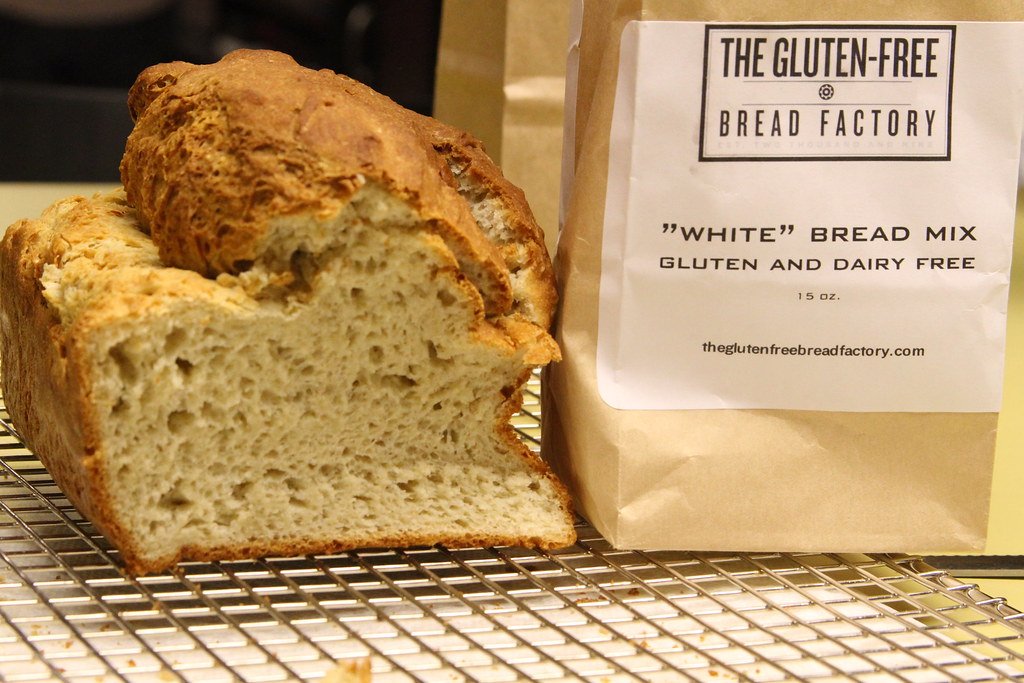Step into a world where bread doesn’t mean bellyaches, pasta doesn’t provoke pain, and indulgence doesn’t come at the cost of your health. Welcome to the mystical realm of gluten-free living—a voyage tailored for those navigating the labyrinth of Celiac Disease and Gluten Sensitivity. In this remarkable journey, we take you by the hand and embark on a quest to demystify these dietary restrictions, revealing the secrets to a life free from the clutches of gluten. So strap on your apron, grab your recipe book, and join us on an extraordinary adventure through the diverse landscape of gluten-free living.
Understanding Celiac Disease: The Basics and Beyond
The Basics of Celiac Disease
Celiac disease, also known as gluten-sensitive enteropathy, is an autoimmune disorder that affects the small intestine. It occurs when the body’s immune system mistakenly reacts to gluten, a protein found in wheat, barley, and rye. This immune response damages the lining of the small intestine, leading to a range of symptoms and potential long-term complications if left untreated.
Key Points to Understand about Celiac Disease:
- Celiac disease affects individuals of all ages, genders, and ethnicities.
- It is estimated that approximately 1 in 100 people worldwide have celiac disease, but many remain undiagnosed.
- Genetics play a significant role in developing celiac disease, and it often runs in families.
- The symptoms of celiac disease can vary widely, ranging from digestive issues like bloating and diarrhea to non-digestive symptoms such as fatigue, joint pain, and skin rashes.
Diagnosing Celiac Disease:
If you suspect you may have celiac disease, it is crucial to consult a healthcare professional for proper diagnosis. The diagnosis typically involves a combination of blood tests to check for specific antibodies associated with celiac disease and an intestinal biopsy to confirm the presence of villous atrophy caused by gluten intolerance. It is important not to eliminate gluten from your diet before these tests, as it can affect the accuracy of the results.
Beyond the Basics: Living with Celiac Disease
Once diagnosed, managing celiac disease requires a strict gluten-free diet. This means avoiding all sources of gluten, including not only obvious ones like bread and pasta but also hidden sources like sauces, processed foods, and certain medications. It is essential to read food labels carefully and educate yourself about safe ingredients and potential cross-contamination risks.
Throughout your celiac journey, you may encounter challenges, from dining out to traveling. However, there are numerous resources, support groups, and gluten-free alternatives available to help make living with celiac disease easier and enjoyable.
Remember, every individual’s experience with celiac disease is unique, so it’s essential to work closely with healthcare professionals and registered dietitians to ensure you receive the appropriate guidance and support tailored to your specific needs. With knowledge, a positive mindset, and a focus on a gluten-free lifestyle, individuals with celiac disease can lead healthy and fulfilling lives.
Gluten Sensitivity: Unraveling the Mysteries
Unraveling the Mysteries of Gluten Sensitivity
Gluten sensitivity has long been a topic of debate and intrigue. With more people discovering adverse reactions to gluten-containing foods, the mysteries surrounding this condition continue to unfold. Let’s dive deeper into the world of gluten sensitivity and shed some light on the enigma.
1. What is Gluten Sensitivity?
At its core, gluten sensitivity refers to the body’s non-celiac response to gluten, a protein found in wheat, barley, and rye. Unlike celiac disease, which is an autoimmune disorder where gluten triggers an immune response damaging the small intestine, gluten sensitivity lacks the same level of severity. However, it can still result in a range of uncomfortable symptoms such as bloating, abdominal pain, fatigue, and brain fog.
2. Causes and Triggers
The exact causes of gluten sensitivity are not yet fully understood, contributing to its mysterious nature. Scientists believe that both genetic and environmental factors play a role. Recent research suggests that changes in gut microbiota, sensitivity to specific types of gluten proteins, and a weakened intestinal barrier may contribute to the development of gluten sensitivity. Environmental triggers, such as stress, infections, or even pregnancy, can also exacerbate symptoms in susceptible individuals.
3. Diagnosis and Management
Despite the difficulties in diagnosing gluten sensitivity accurately, it’s crucial for individuals experiencing symptoms to see healthcare professionals. Elimination diets, where gluten-containing foods are temporarily removed and then reintroduced, can help identify potential triggers. Other diagnostic tests, including genetic profiling and blood marker analysis, are being researched to enhance detection methods. If diagnosed with gluten sensitivity, the primary treatment involves adopting a gluten-free diet, which often brings relief and improves overall well-being for those affected.
In summary, the mysteries of gluten sensitivity persist, but scientific advancements and a growing understanding of this condition are gradually unraveling its secrets. As more research is conducted, we continue to gain insight into the complexities surrounding gluten sensitivity. By raising awareness and supporting affected individuals, we can work towards a future where gluten sensitivity is better comprehended and managed.

Navigating a Gluten-Free Lifestyle: Practical Tips and Strategies
Living a gluten-free lifestyle can be challenging, but with the right tips and strategies, it can become a seamless part of your everyday routine. Here are some practical suggestions to help you navigate the world of gluten-free living:
1. Educate Yourself:
Take the time to fully understand what gluten is and where it can hide. Learn to read food labels carefully, as gluten can often be found in unexpected places like sauces, dressings, and soups. Familiarize yourself with naturally gluten-free foods and alternative grains, such as quinoa, buckwheat, and rice.
2. Communication is Key:
When dining out, don’t hesitate to communicate your dietary needs to the waiter or chef. Be clear and specific about your gluten-free requirements. Request information regarding their preparation methods, cross-contamination risks, and gluten-free alternatives available. This will ensure that your meal is safe and enjoyable.
3. Stock Up on Gluten-Free Goodies:
Make your pantry gluten-free friendly by stocking up on essentials like gluten-free flours, bread, pasta, and snacks. Experiment with new recipes and cooking techniques to discover delicious meals that meet your dietary needs. Don’t forget to indulge in gluten-free treats like cookies and cakes; there are plenty of fantastic options available!
4. Join a Supportive Community:
Connecting with others who understand the challenges of living gluten-free can be incredibly helpful. Join online forums, support groups, or attend local meet-ups to share experiences and gain valuable advice. Embracing a gluten-free lifestyle becomes easier when surrounded by a supportive community.

Hidden Sources of Gluten: How to Spot Them and Avoid Cross-Contamination
When it comes to sticking to a gluten-free diet, many people are diligent in checking food labels and avoiding obvious sources of gluten like bread, pasta, and cereals. However, there are numerous hidden sources of gluten that can easily go unnoticed, making it crucial to have a keen eye and thorough understanding of potential culprits.
Condiments and Sauces: While condiments and sauces seem innocent, they can often hide gluten-containing ingredients such as malt vinegar, soy sauce, and even some salad dressings. Ensure you read the labels carefully, opting for certified gluten-free versions or making them from scratch using gluten-free alternatives.
Medications and Supplements: Interestingly, gluten can even sneak into medications and supplements. Many pills and capsules are coated with substances that may contain gluten, so it’s vital to check with your pharmacist or the manufacturer to guarantee they are free of gluten. Additionally, certain nutritional supplements may also contain gluten, so it’s essential to verify their ingredients list before consumption.
Cross-Contamination: Cross-contamination poses a significant risk for individuals with gluten sensitivities. Even though a particular food item may be inherently gluten-free, it can become contaminated during preparation or cooking processes. Shared utensils, cutting boards, and cooking surfaces can transfer gluten, making it important to have designated kitchen items for gluten-free cooking. Also, be cautious when eating out, as restaurants may not always have separate areas to prepare gluten-free dishes.
By taking the time to familiarize yourself with the hidden sources of gluten and implementing preventive measures, you can avoid accidental gluten consumption and stay true to your gluten-free lifestyle. Remember to always read labels, ask questions, and advocate for your dietary needs – it’s the key to enjoying a wholesome, gluten-free life.

The Gluten-Free Diet: Crafting a Balanced and Nutrient-Rich Meal Plan
When it comes to adopting a gluten-free lifestyle, it’s crucial to ensure your meal plan is not only free of gluten but also nutritionally balanced and packed with essential nutrients. Crafting a gluten-free meal plan can be a breeze with a little creativity and some thoughtful consideration. Here are some tips to help you create a balanced and nutrient-rich gluten-free meal plan that will keep your taste buds satisfied and your body nourished:
1. Start with a Solid Foundation
Building a balanced gluten-free meal plan starts with a foundation of whole grains that are naturally gluten-free. Embrace the versatility of quinoa, brown rice, millet, and buckwheat as your go-to gluten-free grains. These grains are not only rich in fiber but also packed with minerals, vitamins, and antioxidants. Incorporate them into your meals to add substance and nutrition.
2. Go Green with Veggies
Vegetables are the cornerstone of any healthy diet, and a gluten-free lifestyle is no exception. Fill your plate with a colorful array of fresh, seasonal vegetables to provide a wide range of vitamins, minerals, and phytochemicals. Consider adding nutrient powerhouses like kale, spinach, broccoli, and bell peppers to your meals for an extra boost of antioxidants and fiber.
3. Seek Out Protein Power
Protein is an essential component of any meal plan, gluten-free or not. Incorporate gluten-free protein sources such as lean meats, poultry, fish, legumes, and tofu into your diet. These protein-packed foods will not only keep you feeling satisfied but also provide essential amino acids for muscle repair and growth. Don’t forget to add a variety of nuts and seeds to your daily snack repertoire for an extra protein boost.
Crafting a balanced and nutrient-rich gluten-free meal plan is all about creativity and exploring the vast array of gluten-free options available. Experiment with flavors, textures, and cooking techniques to discover new taste sensations that will make your gluten-free journey exciting and enjoyable.
Insights and Conclusions
In a world filled with doughy temptations and pasta paradise, those living with celiac disease and gluten sensitivity face unique challenges on their culinary journey. While the road may seem treacherous at times, fear not, for gluten-free living has never been easier or more exciting. By navigating the vast landscape of gluten-free alternatives, experimenting with innovative recipes, and embracing a community of like-minded individuals, you can embolden your taste buds and indulge in a rich array of flavors that will leave you wondering why you didn’t embark on this gluten-free adventure sooner.
Let the grains of doubt disperse and make way for a newfound appreciation for the countless gluten-free options that await your exploration. From fluffy gluten-free pancakes that rival their gluten-laden counterparts to tantalizing pastries that sing with decadence, the world of gluten-free living has evolved into a realm of infinite culinary possibilities.
Beyond the sheer delight of gluten-free indulgence, remember that living a gluten-free lifestyle is not just about the food; it is a transformative journey from within. Embracing this lifestyle means opening your heart to a community of individuals who are pioneers in discovering new ways to thrive while satisfying their cravings and nourishing their bodies. Together, we navigate the path to better health and wellbeing, sharing recipes, tips, and personal triumphs in a language only we understand.
So, as you embark on this gluten-free odyssey, remember that your journey is an ever-evolving narrative, meant to be customized to your unique needs and experiences. Let curiosity guide you, as you delve into the world of gluten-free living, and discover the myriad of treasures that await. With newfound knowledge and a dash of culinary creativity, you will navigate the labyrinth of celiac disease and gluten sensitivity, emerging stronger, wiser, and filled with a renewed zest for life.
Gluten-free living is not a limitation, but a gateway to a vibrant world of flavors, friendships, and personal growth. Embrace this path with an open mind and an adventurous spirit. Bon appétit, fellow gluten-free warriors, as you savor each moment and redefine the art of living gluten-free.

